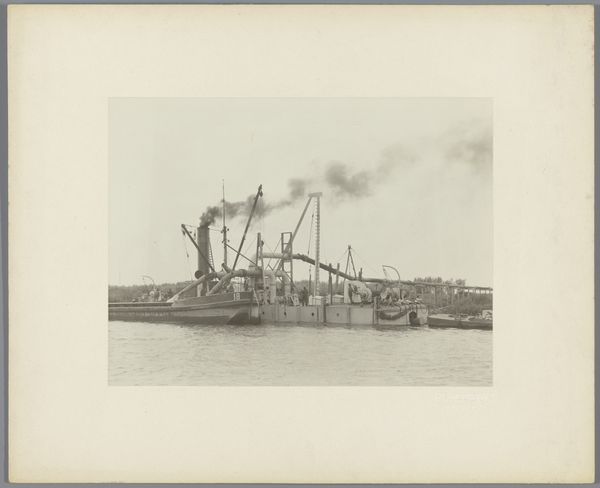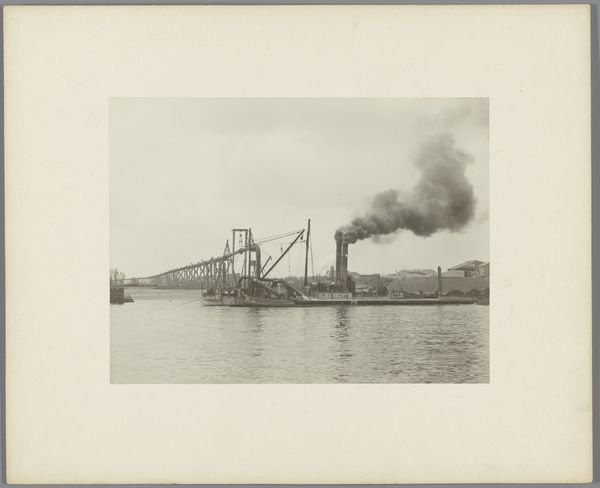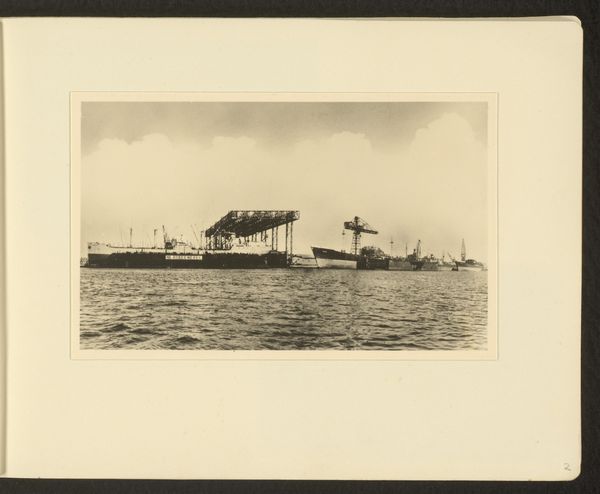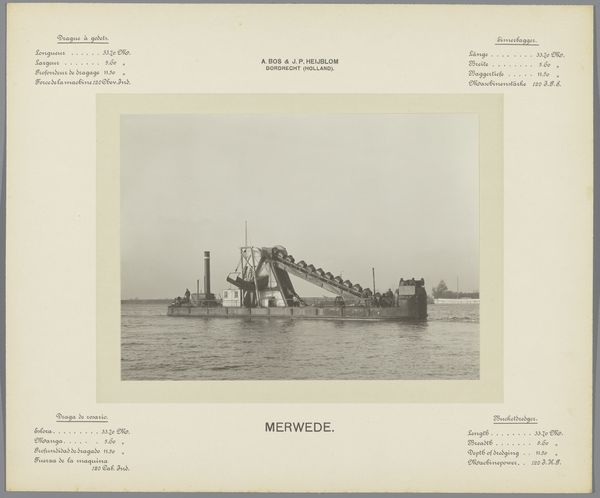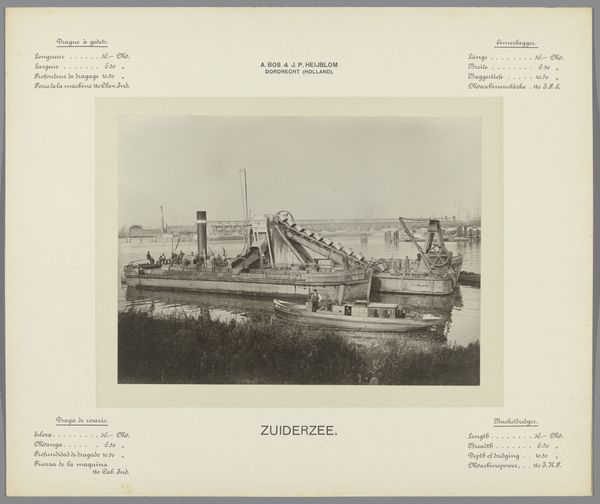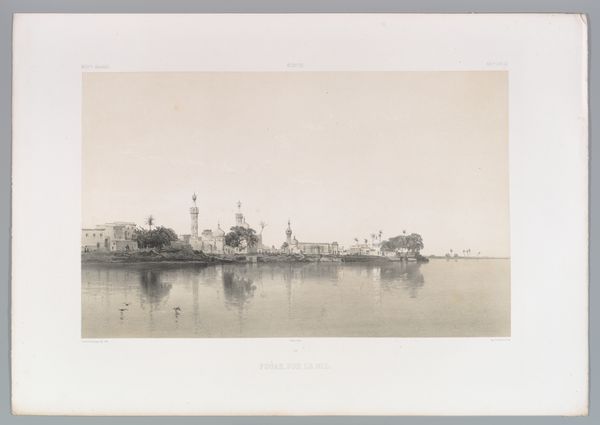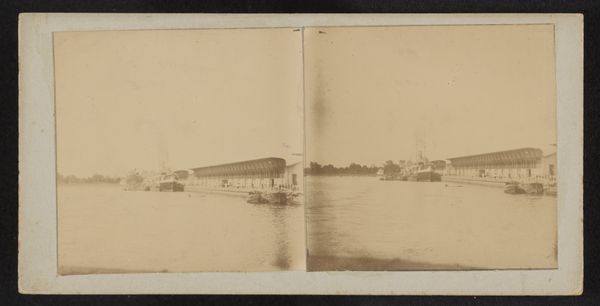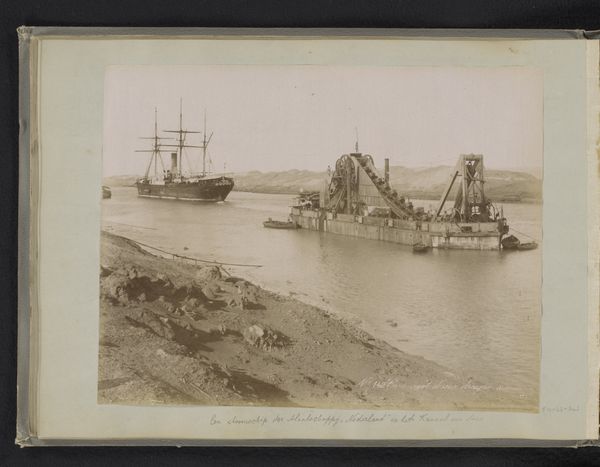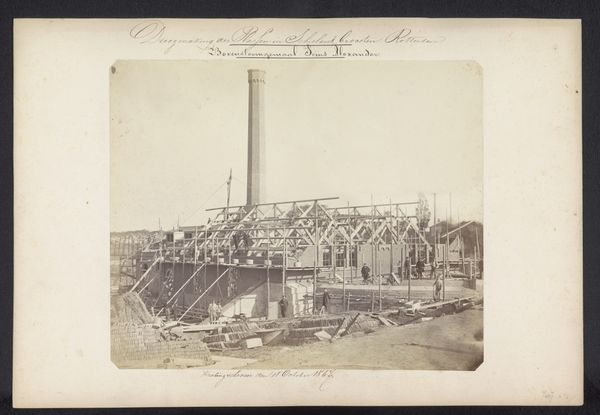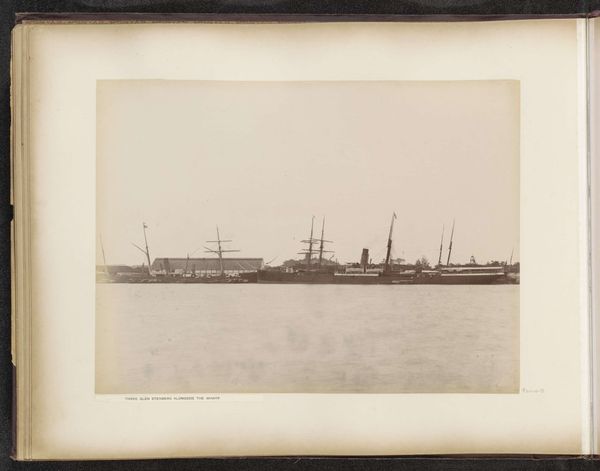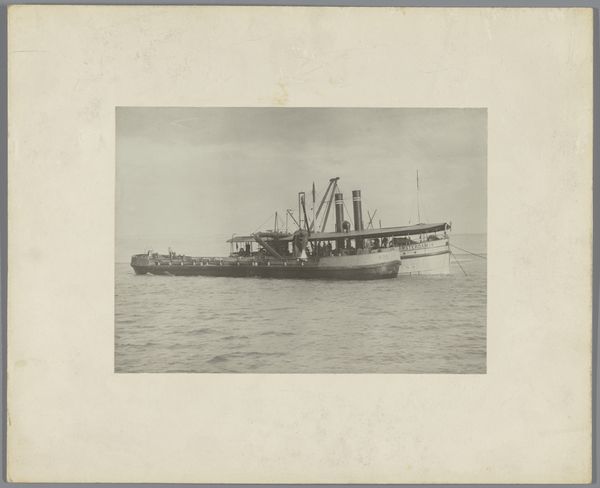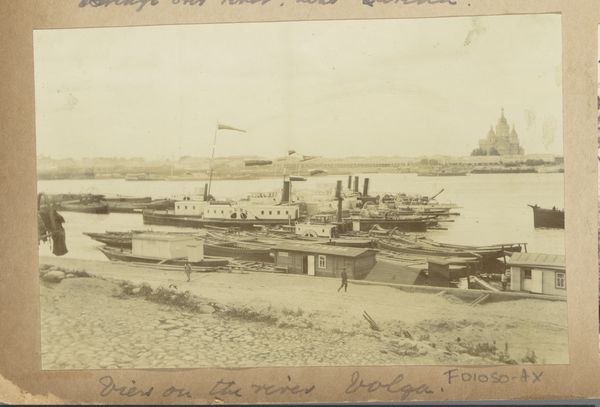
photography, gelatin-silver-print
#
photo of handprinted image
#
ship
#
landscape
#
photography
#
gelatin-silver-print
#
modernism
#
realism
Dimensions: height 160 mm, width 220 mm, height 284 mm, width 348 mm
Copyright: Rijks Museum: Open Domain
Curator: What a stark, yet captivating image. This gelatin silver print, entitled "Baggermolen Zuidholland", was captured in 1906 by Henricus Jacobus Tollens. Editor: There’s a sort of… quiet drama in it. The monotone palette combined with that looming dredging ship evokes this real sense of somber industry, as if the technology itself embodies a shift in power dynamics. Curator: Absolutely. Given that this is a hand-printed image, let’s consider Tollens’ labor, and also the labor enacted *by* that ship. What does it *do* to the land? We can think about industrialization in the Netherlands at this time. I think that this challenges some perceptions about Dutch art; instead of windmills, we are viewing heavy industry. Editor: Right, and what happens when the technology depicted reshapes both the landscape and the social order? These machines provided labor opportunities for some while displacing others, forever altering rural economies and ecologies. In many ways, what appears as realism actually embodies modernity's complexities. Who benefited, and at what cost? Curator: The means of production here is quite apparent. The gelatin silver process was innovative then, enabling mass production and greater accessibility to photographic images. We see here the technology both in subject, the dredging mill, and in form, the gelatin silver print. It prompts questions about how new media like photography affected older visual forms such as painting and drawing, as photography started to usurp traditional ways of representing landscapes. Editor: And what does this image do to those earlier depictions of the land? By focusing on this singular dredging vessel, this almost portrait-like perspective lends it an uncanny agency, even dignity. We should investigate not only its composition but its role within power dynamics involving humanity’s exploitation of the environment and other living entities, like those whose riverbeds were altered by that very dredger. Curator: Yes, it invites us to critically examine the narratives and ideologies of progress. The environmental consequences, the changes to labour and society. These things require broader and critical conversation. Editor: Agreed. Ultimately, what appears documentary prompts reflection regarding how progress permanently reshapes existence for generations—or destroys that existence entirely. Curator: I concur.
Comments
No comments
Be the first to comment and join the conversation on the ultimate creative platform.
